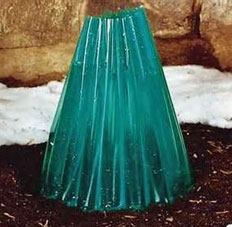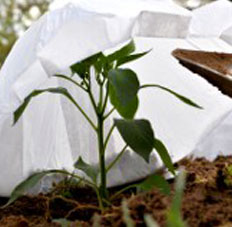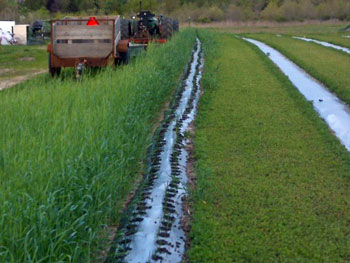Smart vegetable gardening with season extenders
Use techniques to extend the amount of days you can grow vegetables in Michigan.
Michigan’s climate offers a limited amount of days suitable for vegetable gardening. Depending upon your location, the growing season varies. Some Upper Peninsula locations may only get 80 frost free days, whereas in the Lower Peninsula locations may get up to 170 frost free days. This factor can really limit a gardener’s success. If you struggle to get certain vegetables to mature before a fall frost or would like to enjoy greens or other vegetables earlier in the season, consider using techniques that will extend the growing season.
Season extenders will require extra time, effort and money to establish. It will take more than simply planting seeds or transplants in the garden. You will need to collect, purchase or construct each of the structures that provide additional shelter to the plants. You will also need to monitor daily temperatures and expected changes so that the structures do not get too cold, too hot or too humid for the plants you are growing. A good weather monitoring resource is Michigan State University’s Enviro-weather website. Weather stations throughout Michigan provide daily forecasts as well as other weather-related growing information. The Farmer’s Almanac also has a useful frost date calculator.
Season extenders include cold frames, high tunnels, black plastic mulch, row covers and cloches. Each one differs in the level of difficulty to construct, the cost involved and the time involved in plant monitoring. The simplest device is the cloche which is simply a transparent cover placed over a plant that helps protect it from cooler temperatures in the spring. Examples of these include Wall O’ Waters and HotKaps. A cheaper alternative is to use a plastic milk jug with the bottom cut off and placed over a transplant within the garden. These covers create a greenhouse environment that provides additional radiant heat to the plant. You do need to be careful that the plant does not overheat and dry out.



Wall O’ Water (left), HotKaps (middle) and a milk jug serving as a cloche (right).
Photo credits: www.wall-o-water.com (left), http://hotkaps.com (middle), www.livingthecountrylife.com (right).
A cold frame is usually a portable structure with wooden sides and a plexiglass or glass top. The top is hinged so it can be opened fully or partially depending upon the outside temperature. As the glass collects the sun’s radiation, the inside temperature builds and will provide an environment to start and grow cool season crops such as lettuce, other greens and cole crops like broccoli in the early spring months and extend their growing into the fall.
High tunnels are hoophouses with either a single or double layer of plastic. This structure can be used year round. The air between the two layers provides added insulation and any sunlight during the winter months is radiated within the structure. Visit the MSU Hoophouse website to learn about construction and locations of commercial high tunnel sites. Check out the YouTube videos that give construction ideas for more small-scale home garden operations.

Inside view of the MSU’s Student Organic Farm high tunnel. Photo credit: MSU
Using clear or black plastic as mulch around warm season crops, such as tomatoes and squash, will aid in heating up the soil quicker. Be sure plants receive enough water with this technique. Row covers are made from spun polyester and polypropylene. Some are perforated. They are lightweight and can float over most crops without support. These are used to cover plants that are in danger of frost damage; they provide an additional 2 to 8 degrees of frost protection. View a MSU video on row covers for vegetables.


Use of black plastic as a mulch (left) and spunbonded row covers (right). Photo credits: Hal Hudson, MSU Extension
Other techniques that will help gardeners with a limited growing season include the use of Michigan State University Extension’s Smart Plants initiative that guides gardeners in selecting the right plant for the site and conditions. Consider growing earlier varieties, for example an early variety tomato can mature in 49 days versus one that needs 80 days. Plant more cool season crops, such as kale, which thrives in cooler temperatures.
Michigan State University Extension’s horticulture educators will be presenting Smart Gardening in a variety of ways at three public shows in Michigan during 2014. The Novi Cottage and Lakefront Living Show on Feb. 27-March 2; the West Michigan Home and Garden Show on March 6-9; and the Lansing Home and Garden Show on March 13-16 will host a variety of free seminars, informational booths and be the site to “ask the experts” from MSU Extension about your gardening questions.
For more information on a wide variety of Smart Gardening topics, visit the Gardening in Michigan website at www.migarden.msu.edu or contact MSU’s toll-free garden hotline at 1-888-678-3464.



 Print
Print Email
Email



